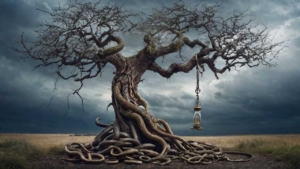Did you know that, on average, a single song from the band Tool can prompt hundreds of interpretive discussions online? You’re now part of this ongoing conversation as we unpack the complex tapestry of ‘Adam’s Curse’ and its lyrical meaning.
In your exploration of this song, you’ll encounter a blend of poetic references, existential musings, and raw emotion that Tool is known for. The lyrics seemingly draw inspiration from W.B. Yeats’s poem of the same name, weaving a narrative that challenges listeners to ponder the intersection of love, labor, and creativity.
As you reflect on the intricate wordplay and thematic depth, you’ll find yourself questioning not just the song’s meaning, but also how it resonates with the broader human experience. What hidden messages lie within the verses, and how might they alter your understanding of the curse that Adam bequeathed?
Let’s explore the layers beneath the surface, which may forever change your perception of what it means to truly toil and love.
Unveiling "Adam’s Curse
Delving into ‘Adam’s Curse,’ it becomes evident that Yeats intricately weaves the tribulations of love and the painstaking craft of poetry against the backdrop of human fallibility.
William Butler Yeats articulates the labor inherent in creating beauty, as Adam’s fall but needs a beautiful mild woman, together at one summer’s end, to confess, weary-hearted as that hollow moon, their toil for the name of love.
Lyrical Analysis
Analyzing ‘Adam’s Curse’ by W.B. Yeats allows us to understand the poet’s reflections on the challenges of love and creativity. The poem’s rhythm echoes the hard work of creating art and the effort required to maintain love. Yeats’s language conveys that love has become subdued, similar to stars that once shone close to each other but have since drifted apart. This imagery suggests the difficulty that people face in loving each other after a metaphorical fall from grace.
Breaking down Yeats’s choice of words and imagery, we see recurring themes of struggle and the pursuit of beauty. Symbols such as the fallen stars serve as metaphors for lost love or the decline of a relationship. The poem leaves room for different interpretations, with some ambiguity surrounding what Yeats considers the ‘fall’ and how it has impacted human relationships and creative endeavors.
Reflecting on the significance of this poem, it’s clear Yeats is commenting on the often overlooked effort behind writing poetry and sustaining love. Each is an act that requires dedication and can be fraught with challenges, much like the labor of Adam after being cast out of Eden.
In writing, we should aim for a genuine connection with the reader, using a conversational tone. It’s like sitting down for a chat with a friend, where you’re sharing insights about the intricate dance of love and the creative process. Avoiding overused terms and complex jargon helps make the analysis more accessible.
And now for a custom quote to wrap up our analysis: ‘Yeats whispers to us across time, reminding us that love and poetry demand our sweat and toil, as precious as the stars scattered across our night sky.’
Musical Analysis
When examining the musicality of ‘Adam’s Curse’, one finds that the poem’s rhythmic flow and its adherence to structure amplify the central themes of labor and beauty in Yeats’s work.
The consistent AABBCC rhyme scheme propels the narrative, as Yeats muses on high ideals and the fall but needs much more than words to convey the weariness of love—reflecting how far yet we’d grown from Eden’s grace.
Contextual Analysis
Building on the rhythmic and structural elements of ‘Adam’s Curse’, let’s examine how the poem’s 1904 publication, amid personal rejections experienced by Yeats, frames its exploration of beauty, love, and human toil.
| Theme | Insight | Power Dynamics |
|---|---|---|
| Beauty | Reflects society’s labor | Mastery of aesthetics |
| Love | Resonates with weary-hearted | Dominance in vulnerability |
| Toil | Mirrors times waters | Control through perseverance |
| Language | Quiet at the name | Command of expression |
| Desire | High way of love | Authority over ambition |
Yeats’s Symbolic Meanings
Yeats’s poem ‘Adam’s Curse’ conveys the idea that creating beauty is hard work. It suggests that the effort put into love and art often goes unnoticed. The poem, set in a time that feels ancient, speaks to the difficulty of artistic creation, suggesting it’s as tough as the physical labor of Adam after being cast out of Eden.
When analyzing ‘Adam’s Curse,’ we see that the poem combines words and rhythms to express the theme. The context of the poem also matters, as it was written in a time when the value of art and poetry was in question. Yeats uses the poem to argue that both love and poetry require serious effort, and that this effort is often underappreciated.
In sum, ‘Adam’s Curse’ is rich with meaning. It shows the connection between beauty, work, and love. It challenges the reader to recognize the effort behind what appears effortlessly beautiful. This poem reminds us that the creation of art and the act of loving aren’t as simple as they may seem.
Custom Quote: ‘For beauty, like the love it often celebrates, is born of a labor that the world seldom sees.’
Frequently Asked Questions
What Is the Significance of the Title Adams Curse?
You’re barking up the wrong tree if you’re ignoring the context of Tool’s lyrics. The title "Adam’s Curse" signifies the enduring struggle and pain in love and beauty, a legacy of original sin.
What Was the First Tool Song?
You’re seeking the origins of Tool’s music; their first song, "Cold and Ugly," showcases the band’s raw power, setting the stage for their impactful and complex discography that commands respect and attention.


Leave a Reply